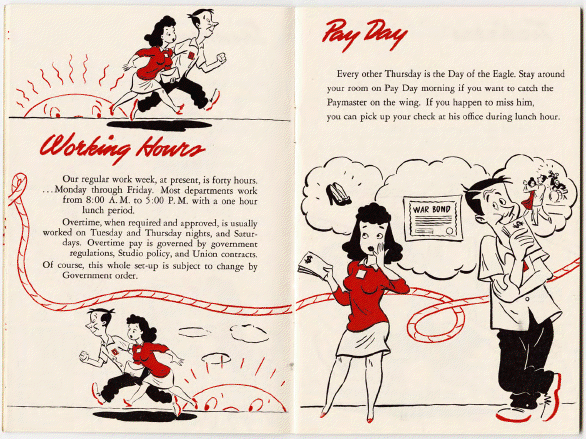The list is not exhaustive but does provide a start for those looking into the issue of recidivism.(parts excerpted from Bad Ink, by Hartger)
Anderson, D. B., Schumacker, R. E. & Anderson, S. L. 1991. Release Characteristics and Parole Success. Journal of Offender Rehabilitation 17:133-145.
Bales, W. D. & Mears, D.P. 2008. Inmate Social Ties and the Transition to Society: Does Visitation Reduce Recidivism? Journal of Research in Crime and Delinquency 20:1 35.
Baumer, E. 1997. Levels and Predictors of Recidivism: The Malta Experience. Criminology 35(4), 601-628.
Beck, A.J., and Shipley, B.E. 1989. Recidivism of Prisoners Released in 1983. Bureau of Justice Statistics—Special Report. Washington, DC: U.S. Department of Justice.
Beck, Allen J. & Bernard E. Shipley. 1987. Recidivism of Young Parolees. Bureau of Justice Statistics—Special Report. Washington, DC: U.S. Department of Justice.
Beck, Allen J. & Bernard E. Shipley. 1997. Recidivism of Prisoners Released in 1983. Bureau of Justice Statistics—Special Report. Washington, DC: U.S. Department of Justice.
Benda, B. B. & Toombs, N. J. 2002. Two Preeminent Theoretical Models: A Proportional Hazard Rate Analysis of Recidivism. Journal of Criminal Justice 30, 217-228.
Benedict, R. W., Huff-Corzine, L., & Corzine, J. 1998. Clean Up and Go Straight: Effects of Drug Treatment on Recidivism among Felony Probationers. American Journal of Criminal Justice, 22, 169-187.
Blumstein, A., Barnett, A., & Farrington, D. 1987. Probabilistic Models of Youthful Criminal Careers. Criminology, 25, 83-107.
Carson, E.A., Sabol, W.J. 2011. Prisoners in 2011. Bureau of Justice Statistics. Washington, D.C.: U.S. Department of Justice.
Chen, K. & Shapiro, J. 2007. Do Harsher Prison Conditions Reduce Recidivism? A Discontinuity-based Approach. American Law and Economics Review, 9(1), 1-29.
Crowe, M. 2012, September 20. Are Tattoos in the Workplace Still Taboo?. USA Today.
Dooley, B., Seals, A., Skarbek, D. 2013. The Effect of Prison Gang Membership on Recidivism. Journal of Criminal Justice, 42(3), 267-275..
Drago, F., Galbiati, R. & Vertova, P. 2011. Prison Conditions and Recidivism. American Law and Economics Review, 13(1), 103-130.
Duwe, G. & Donnay, W. 2008. The Impact of Megan’s Law on Sex Offender Recidivism: The Minnesota Experience. Criminology, 46(2), 411-446.
Florida Department of Corrections (FDOC). 2013. Florida Prison Recidivism Report: Releases from 2004 to 2011. FDOC Publications.
Freeman, R. 2003. Can We Close the Revolving Door?: Recidivism vs. Employment of Ex- Offenders in the U.S. Urban Institute Reentry Roundtable.
Gainey, R.R., Payne, B.K., & O’Toole, M. 2000. The relationships between time in jail, time on electronic monitoring, and recidivism: An event history analysis of a jail based program. Justice Quarterly, 17(4), 733-752.
Gambetta, D. 2009. Codes of the Underworld: How Criminals Communicate. Princeton University Press.
Gendreau, P., Little, T., & Claire Goggin. 1996. A Meta-Analysis of the Predictors of Adult Offender Recidivism: What Works? Criminology 34: 575-607.
Gruenewald, P.J. & West, B.R. 1989. Survival Models of Recidivism Among Juvenile Delinquents. Journal of Quantitative Criminology, 5(3), 215- 229.
Hanley, D.E. & Latessa, E.J. 1997. Correlates of Recidivism: The Gender Division. Academy of Criminal Justice Sciences.
Hennessey, R. 2013, February 27. Tattoos No Longer A Kiss of Death in the Workplace. Forbes.
Hepburn, J. R. & Albonetti, C.A. 1994. Recidivism among Drug Offenders: A Survival Analysis of the Effects of Offender Characteristics, Type of Offense, and Two Types of Intervention. Journal of Quantitative Criminology 10:159-179.
Husock, H. 2012, August 3. From Prison to a Paycheck. The Wall Street Journal.
Jurik, N. C. 1983. The Economics of Female Recidivism. Criminology, 21, 603-622.
Kaufman, J. 2013, April 17. Keeping Their Art to Themselves. The New York Times.
Kilgannon, C. 2009, April 1. When Tattoos Hurt Job Prospects. The New York Times.
Kohl, R., Hoover, H.M., McDonald, S.M. & Solomon, A.L. 2008. Massachusetts Recidivism Study: A Closer Look at Releases and Returns to Prison. Urban Institute-Justice Policy Center: Washington D.C.
Kruttschnitt, C., Uggen, C., & Shelton, K. 2000. Predictors of Desistance Among Sex Offenders: The Interaction of Formal and Informal Social Controls. Justice Quarterly, 17, 61-87.
Kubrin, C.E. & Stewart, E.A. 2006. Predicting Who Reoffends: The Neglected Role of Neighborhood Context in Recidivism Studies. Criminology 44:165-197.
Langan, P.A., and Levin, D.J. 2002. Recidivism of Prisoners Released in 1994. Bureau of Justice Statistics. Washington, D.C.: Bureau of Justice Statistics.
Langan, P.A., Schmitt, E.L. & Durose, M.R. 2003. Recidivism of Sex Offenders Released from Prison in 1994. Bureau of Justice Statistics. Washington, DC: U.S. Department of Justice.
Lozano, A.T.R., Morgan, R.D., Murray, D.D., & Verghese, F. 2010. Prison Tattoos as a reflection of the Criminal Lifestyle. International Journal of Offender Therapy and Comparative Criminology 55 (4), 509-529.
Pew Center on the States. 2010. Millennials: Confident. Connected. Open to Change. Pew Center on the States.
Pia Negro, M. 2012, October 16. Baltimore Program Provides Job Support for Ex-Prisoners Coming Home. Baltimore News.
Putnins, A. 2002. Young Offenders, Tattoos and Recidivism. Psychiatry, Psychology and Law, 9(1), 62-68.
Rosenberg, T. 2012, March 28. Out of Jail, and Into a Job. The New York Times.
Spohn, C. & Holleran, D. 2002. The Effect of Imprisonment on Recidivism Rates of Felony Offenders: A Focus on Drug Offenders. Criminology 40:329-358.
Steward, Dwight, Estimating Recidivism Risk in Earnings Loss Calculations for Persons Recently Released from Incarceration (October 11, 2010). Available at SSRN: http://ssrn.com/abstract=1753285 orhttp://dx.doi.org/10.2139/ssrn.1753285
Tahmincioglu, E. 2010, February 17. Unable to get Jobs, Freed Inmates Return to Jail. NBC News.
Uggen, C. 2000. Work as a Turning Point in the Life Course of Criminals: A Duration Model of Age, Employment, and Recidivism. American Sociological Review 67, 529-546.
Visher, C.A. & Linster, R.L. 1990. A Survival Model of Pretrail Failure. Journal of Quantitative Criminology, 6(2), 153-184.
Visher, C.A., Lattimore, P.K., & Linster, R.L. 1991. Predicting the Recidivism of Serious Youthful Offenders Using Survival Models. Criminology, 29(3), 329-366.
Waters, K. 2012. The Tattooed Inmate and Recidivism. Electronic Theses, Treatises, and Dissertations. Paper 5262.
Windzio, M. 2006. Is There a Deterrent Effect of Pains of Imprisonment? The Impact of ‘Social Costs’ of First Incarceration on the Hazard Rate of Recidivism. Punishment and Society, 8(3), 341-364.









